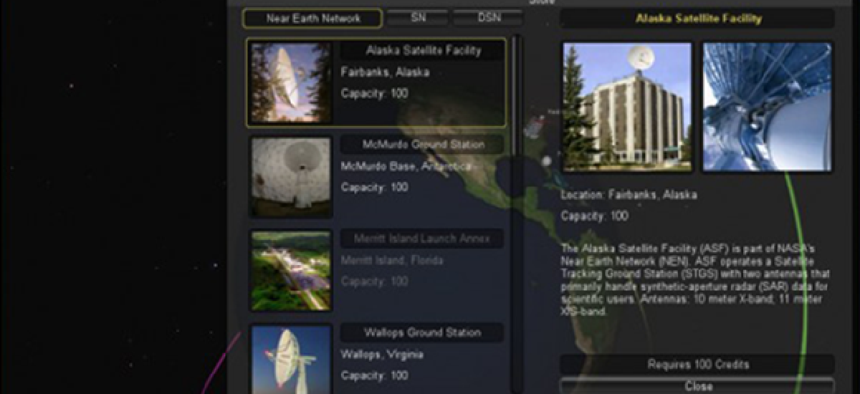How NASA games the system to find new talent


Connecting state and local government leaders
NetworKing is a pretty challenging game aimed at the kind of people the agency wants to open up to careers in science, maybe even at NASA.
Some federal agencies are really doing a lot to reach out to the public, including creating a variety of apps that are helpful, and shine a positive light on themselves. NASA, which always seems to be at the forefront of this type of outreach program, is taking things a step further.
The space agency’s latest game, NetworKing, challenges players to run the Space Communications and Navigation arm of NASA, which is responsible for keeping all satellites running efficiently. This is the type of application which could expand the minds of people thinking about a science-heavy career, and perhaps draw in more people to work for NASA, which also is part of the goal. On that note, NASA may be following the lead of the Army, which recently released a comic app as a recruiting tool.
NetworKing can be played now in a browser window, or downloaded and played on a PC or Mac.
From a gamer’s point of view, NetworKing is actually a very detailed game, which may be the point: NASA wants to attract a certain type of person who would enjoy a challenge and also to show the kinds of pressure the agency faces.
You start by managing satellites in Low Earth Orbit, which is not all that easy. Not only do you have to make sure the satellites you are supporting contribute to science, but they also have to make money, because maintaining the network takes a lot of cash. To make more money, you can take on contracts to provide ground communications for more satellites, but you only have so much network capacity. Eventually you need to purchase more ground stations to get more throughput.
If you can conquer Low Earth Orbit, you can eventually upgrade to a space network, and then the Deep Space Network -- you know, the one that is making NASA consider building a supercomputer on the moon. Each of the networks comes with its share of problems. Disaster can strike either a satellite or a ground station. Then you can either try to fix the problem yourself, which might make things worse, or pay for an expensive fix. Or you could just live with the reduced capacity, but that’s a recipe for failure.
I did find one little bug in my playing, however. When I got to a certain point in the game, it would not let me upgrade my technology even though I had all the prerequisites to do so. Stuck in place, I had to restart that game.
NASA must really enjoy these games. Not only do they own several now in various mediums, such as Moon Base Alpha and its Blast Off trivia game on Facebook, but the agency also has a large library of free-to-use 3D renderings, which the agency says can help would-be designers create their own games.
Gaming efforts like NASA’s and the Army’s are a creative way of attracting young users, and potentially future employees, which is something other public sector agencies could take note of, whether in the federal government, military, law enforcement or health care.
Personally, I was able to fend off the Army’s advances despite its cool games and apps, but those folks at NASA have some really tempting gear. I wonder if they’re hiring?

NEXT STORY: Why NASA thinks a supercomputer on the moon might not be pure fiction




